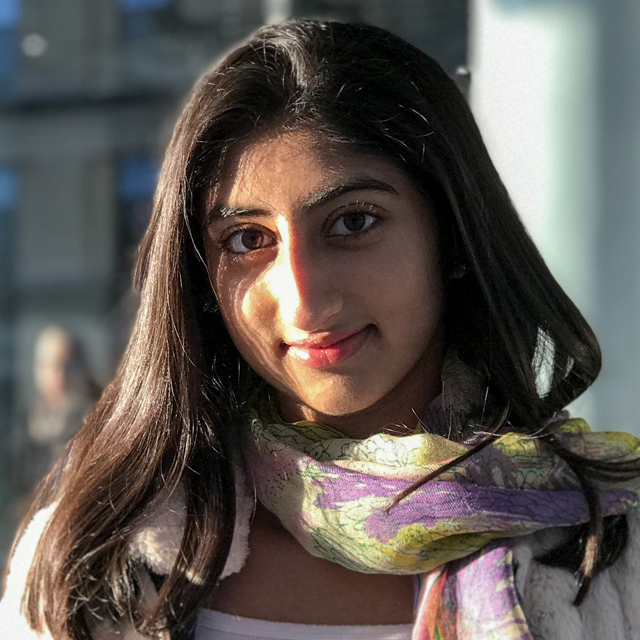From May 16 to May 21, 2021, nearly 2,000 young scientists, engineers, entrepreneurs and inventors convened virtually for a week of connecting with their peers and global STEM leaders, events, and $5 million in awards and prizes. The finalists, selected from nearly 400 affiliate fairs in 64 countries, regions and territories, have all completed exemplary research projects and earned the right to compete at the Regeneron International Science and Engineering Fair (ISEF) 2021 by winning at a Society-affiliated local, regional, state or national science fair.
Finalists’ projects tackled topics ranging from virtual reality to sustainable energy to machine learning. Projects represented a wide range of scientific disciplines and were judged in 21 categories. ZEISS sponsored the prizes for the winners in Applied Microbiology and Disease Detection and Diagnosis with a ZEISS Primostar 3 microscope donation.

Neha Mani, 17, of Bronx, New York received the H. Robert Horvitz Prize for Fundamental Research of $10,000 for her quantitative research of microbiology, which uses a diagnostic method to distinguish bacterial motion to diagnose Inflammatory Bowel Disease (IBD) by mathematically separating swarming from swimming.
Neha shares with us some thoughts about her research project, participating in Regeneron ISEF 2021 and her future plans:
What was your motivation for the application?
I have competed at the New York Science and Engineering Fair for the last two years (sadly the Finals round was cancelled last year due to COVID-19 and no projects were selected to go to ISEF) and I competed at Regeneron ISEF this past spring. I have always loved sharing my work with the judges and upon becoming a finalist for Regeneron ISEF, I took great pleasure in browsing through all of the projects online! I competed amongst incredibly talented high school students with such innovative projects and simply being able to take part in such a science fair was motivation enough.
Why are your findings important?
My project bridges microbiology and biophysics to create a novel diagnostic tool for Inflammatory Bowel Disease (IBD), which is an idiopathic intestinal disease that is characterized by chronic inflammation of the colon. IBD currently impacts 1.6 million people in the United States with 70,000 cases augmenting each year. The diagnostic process is long and inconclusive because no one knows what causes IBD. Blood and fecal tests with generic biomarkers either provide information pertaining just to general inflammation or overlap with other diseases, therefore not providing much specific clinical information. But, what if I were to tell you that bacteria could be the key biomarker we have been missing in effectively diagnosing IBD? Prior evidence has linked bacterial swarming in our gut to IBD and bacterial swimming to a normal healthy gut. No one has taken advantage of this binary in microbial properties to make a better diagnostic tool for IBD, so I sought to develop a novel methodology consisting of microgears, confinement sheets, and a machine-learning algorithm to track and classify bacterial movement. I was able to quantify bacterial motion through the Vicsek model which yields a value called the Vortex Order Parameter that tells me how organized the motion is. I found that swarming bacteria move in a very organized fashion, which manifested in high vortex order parameter values, whereas swimming bacteria move in a very disorganized fashion, which manifested in low vortex order parameter values. My algorithm performed well with 91% accuracy. Therefore, taken together, I concluded that my tool would be better than the current diagnostic process upon refinement. My tool is more efficient, economical, safe, and most importantly, it is accurate and specific to IBD.
What was the most exciting part?
I was excited about learning about the projects my peers had conducted. Judging was another exciting facet of Regeneron ISEF. I was asked about all aspects of my project — encompassing microbiology, physics, and computer science — and my judges seemed so engaged by my interdisciplinary research! We not only talked about the scope of my research, but also about the field of bacteriology as a whole. Those 15-minute time slots were enough to generate really fascinating discourse.
Where do you see your future?
I will be attending Columbia University in the fall and hopefully will pursue either microbiological or cellular research (though I hope to engage in a variety of research experiences of different fields to broaden my knowledge base). I have not fully decided on a career path as of now, but engineering/health fields are appealing!
The Regeneron International Science and Engineering Fair, a program of Society for Science for over 70 years, is the world’s largest international science competition for high school. Through a global network of local, regional and national science fairs, millions of students are encouraged to explore their passion for scientific inquiry. Each spring, a group of these students is selected as finalists and offered the opportunity to compete for approximately US $5 million in awards and scholarships.
In 2019, Regeneron became the title sponsor of ISEF to help reward and celebrate the best and brightest young minds globally and encourage them to pursue careers in STEM as a way to positively impact the world. Regeneron ISEF is supported by a community of additional sponsors, including ZEISS.
Read Next
#advgb-infobox-8c72025e-3784-4615-95c3-1e9739619f3f, .advgb-infobox-8c72025e-3784-4615-95c3-1e9739619f3f {background-color: #f5f5f5;padding: 20px 20px 20px 20px;border: 0px solid #e8e8e8 ;border-radius: 0px;}#advgb-infobox-8c72025e-3784-4615-95c3-1e9739619f3f .advgb-infobox-icon-container, .advgb-infobox-8c72025e-3784-4615-95c3-1e9739619f3f .advgb-infobox-icon-container {background-color: #f5f5f5;padding: 0;margin: 0;border: 0px solid #e8e8e8 ;border-radius: 0px;}#advgb-infobox-8c72025e-3784-4615-95c3-1e9739619f3f .advgb-infobox-icon-container i, .advgb-infobox-8c72025e-3784-4615-95c3-1e9739619f3f .advgb-infobox-icon-container i {color: #333;font-size: 70px;display: block;}#advgb-infobox-8c72025e-3784-4615-95c3-1e9739619f3f .advgb-infobox-textcontent .advgb-infobox-title, .advgb-infobox-8c72025e-3784-4615-95c3-1e9739619f3f .advgb-infobox-textcontent .advgb-infobox-title {color: #333;padding: 0;margin: 5px 0 10px 0;white-space: pre-wrap;}#advgb-infobox-8c72025e-3784-4615-95c3-1e9739619f3f .advgb-infobox-textcontent .advgb-infobox-text, .advgb-infobox-8c72025e-3784-4615-95c3-1e9739619f3f .advgb-infobox-textcontent .advgb-infobox-text {color: #333;padding: 0;margin: 0;white-space: pre-wrap;}





